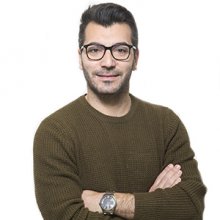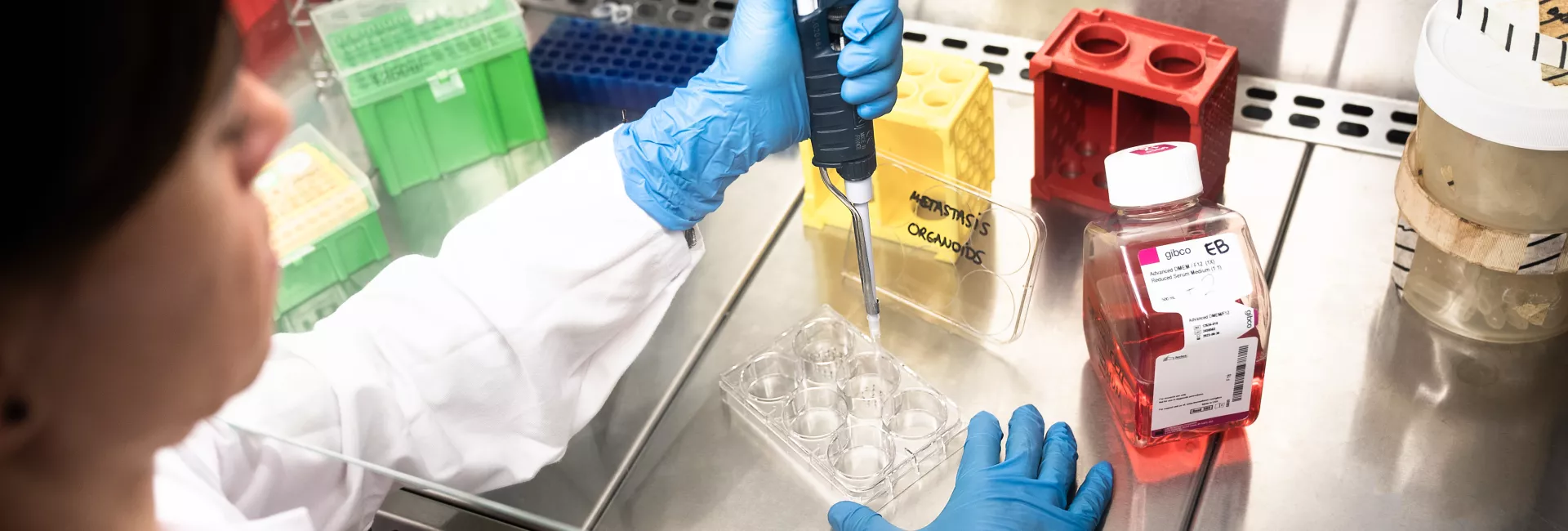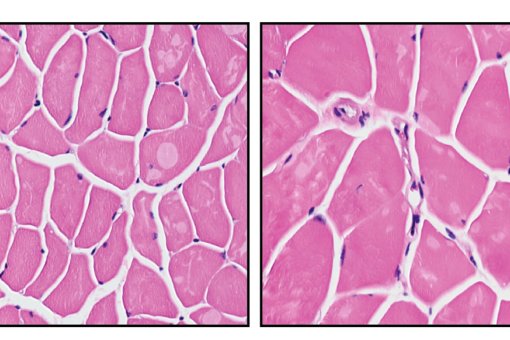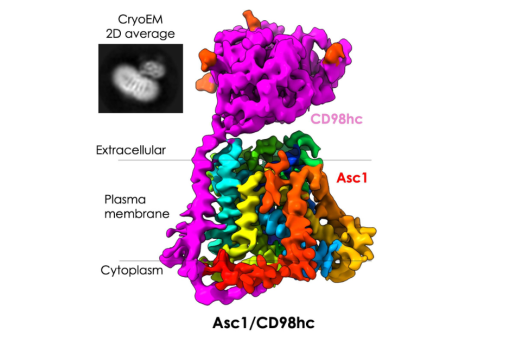Images
Participants








Contact

- Two complementary research articles, published simultaneously in the journals Science and Cell Stem Cell by a team of scientists from the UPF and IRB Barcelona, reveal that central and peripheral circadian clocks coordinate to regulate the daily activity of skin and muscles.
- The coordination between the two clocks (central and peripheral) guarantees 50% of the circadian functions of tissues, including vital processes such as the cell cycle, DNA repair, mitochondrial activity, and metabolism.
- Synchronisation between the central brain clock and peripheral ones prevents premature muscle ageing and improves muscle function, suggesting new strategies to tackle age-related decline through circadian rhythm modulation.
Discovered in the 1970s, circadian clocks are essential for the regulation of biological time in most cells in the human body. These internal mechanisms adjust biological processes to a 24-hour cycle, allowing the synchronisation of cellular functions with daily variations in the environment. Circadian rhythms, which are coordinated by a central clock in the brain that communicates with clocks in different peripheral tissues, influence many functions, from our sleep patterns to our ability to metabolise food.
A team led by Dr. Salvador Aznar Benitah, an ICREA researcher at IRB Barcelona, and Dr. Pura Muñoz-Cánoves, an ICREA researcher in the Department of Medicine and Life Sciences at the Pompeu Fabra University (UPF), has described how the synchronisation between the central clock and peripheral clocks in muscle and skin plays a key role in ensuring the correct function of these tissues, as well as preventing degenerative processes associated with ageing.

The results of this work have been published in two articles in high-impact journals. In this regard, the research on the synchronisation between the central and muscle peripheral clock appears in Science, while the work on the coordination between the central clock and skin peripheral clock has been released in Cell Stem Cell. Both studies reveal the common mechanisms that underscore the importance of this coordination to uphold the optimal functionality of muscle and skin.
The work also describes the remarkable degree of autonomy of the peripheral clocks, which can maintain 24-h cycles and manage approximately 15% of circadian functions in the absence of the central clock.
“It is fascinating to see how synchronisation between the brain and peripheral circadian clocks plays a critical role in skin and muscle health, while peripheral clocks alone are autonomous in carrying out the most basic tissue functions,” says Dr. Aznar Benitah, head of the Stem Cell and Cancer laboratory at IRB Barcelona.
“Our study reveals that minimal interaction between only two tissue clocks (one central and the other peripheral) is needed to maintain optimal functioning of tissues like muscles and skin and to avoid their deterioration and ageing. Now, the next step is to identify the signalling factors involved in this interaction, with potential therapeutic applications in mind,” explains Dr. Muñoz-Cánoves, a UPF Professor who is now a Principal Investigator at Altos Labs (San Diego, US).
"Although we never notice, the tissues of our body undertake a constant daily conversation that keeps us healthy. In our study, we make an important advance in understanding the language and participants of this conversation, setting the stage for us to identify why this conversation goes wrong in ageing and disease,” comments Dr. Thomas Mortimer, a postdoctoral fellow at IRB Barcelona, who has also led this research project.
Coordination with the muscle peripheral clock maintains muscle function and prevents premature ageing
The study published in Science on the communication between the brain and muscle confirmed that the coordination between the central and peripheral clocks is crucial for maintaining daily muscle function and preventing the premature ageing of this tissue. Restoration of the circadian rhythm reduces the loss of muscle mass and strength, thereby improving deteriorated motor functions in experimental mouse models.
 The results of the study have also demonstrated that time-restricted feeding (TRF), which involves eating only in the active phase of the day, can partially replace the central clock and enhance the autonomy of the muscle clock. More relevant still is that this restoration of the circadian rhythm through TRF can mitigate muscle loss, the deterioration of metabolic and motor functions, and the loss of muscle strength in aged mice.
The results of the study have also demonstrated that time-restricted feeding (TRF), which involves eating only in the active phase of the day, can partially replace the central clock and enhance the autonomy of the muscle clock. More relevant still is that this restoration of the circadian rhythm through TRF can mitigate muscle loss, the deterioration of metabolic and motor functions, and the loss of muscle strength in aged mice.
These findings have significant implications for the development of therapies for muscular ageing and the enhancement of physical performance in older age. Drs. Arun Kumar and Mireia Vaca Dempere, both from the UPF, are the first authors of this study, which has also received contributions from Drs. Eusebio Perdiguero and Antonio Serrano, previously at the UPF and now at Altos Labs.
The peripheral clock of the skin integrates and modulates brain signals
In the study published in Cell Stem Cell, the team has demonstrated that the skin circadian clock is pivotal in coordinating the daily physiology of this tissue. By integrating brain signals, and sometimes by modifying them, this coordination ensures the correct functioning of the skin.
A surprising discovery was that, in the absence of the peripheral clock, the central body clock maintains the circadian rhythm of the skin but it works in the opposite way as usual (that is to say, on an opposite schedule). For example, the researchers observed that DNA replication, if regulated only by the central clock, would occur during the daytime, when skin is exposed to ultraviolet light, which would increase the risk of accumulating mutations.
This phenomenon highlights the importance of the peripheral clock, which not only receives signals from the central clock—which coordinates the rhythms of the entire organism—but also adapts these signals to the specific needs of the tissue in which they are (in the case of skin stem cells, DNA replication peaks after exposure to ultraviolet light during the day).
Dr. Patrick-Simon Welz, from the Hospital del Mar Research Institute, has headed this project, together with Drs. Mortimer, Aznar Benitah and Muñoz-Cánoves.
The results of the two studies stem from international collaboration with researchers from the University of California and the University of Texas Health in San Antonio (both in the US), the University of Lübeck in Germany, the Karolinska Institute in Sweden, the Humanitas University in Italy, and Altos Labs San Diego Institute of Science in the US. The project was supported by funding from the European Research Council, the EU H2020 programme, the Ministry of Science, Innovation and Universities, the Government of Catalonia, the Lilliane Bettencourt Foundation, "la Caixa" Foundation, the Marató de TV3 Foundation, the BBVA Foundation and the Novo Nordisk Foundation.
Related articles:
The epidermal circadian clock integrates and subverts brain signals to guarantee skin homeostasis
Thomas Mortimer*, Valentina M. Zinna, Muge Atalay, Carmelo Laudanna, Oleg Deryagin, Guillem Posas, Jacob G. Smith, Elisa García-Lara, Mireia Vaca-Dempere, Leonardo Vinícius Monteiro de Assis, Isabel Heyde, Kevin B. Koronowski, Paul Petrus, Carolina M. Greco, Stephen Forrow, Henrik Oster, Paolo Sassone-Corsi, Patrick-Simon Welz*, Pura Muñoz-Cánoves*, Salvador Aznar Benitah*
Cell Stem Cell (2024) DOI: 10.1016/j.stem.2024.04.013
Brain-muscle communication prevents muscle aging by maintaining daily physiology
Arun Kumar*, Mireia Vaca-Dempere*, Thomas Mortimer, Oleg Deryagin, Jacob G. Smith, Paul Petrus, Kevin B. Koronowski, Carolina M. Greco, Jessica Segalés, Eva Andrés, Vera Lukesova, Valentina M. Zinna, Patrick-Simon Welz, Antonio L. Serrano‡, Eusebio Perdiguero‡, Paolo Sassone-Corsi, Salvador Aznar Benitah*, Pura Muñoz-Cánoves*
Science (2023) DOI: 10.1126/science.adj8533
About IRB Barcelona
The Institute for Research in Biomedicine (IRB Barcelona) pursues a society free of disease. To this end, it conducts multidisciplinary research of excellence to cure cancer and other diseases linked to ageing. It establishes technology transfer agreements with the pharmaceutical industry and major hospitals to bring research results closer to society, and organises a range of science outreach activities to engage the public in an open dialogue. IRB Barcelona is an international centre that hosts 400 researchers and more than 30 nationalities. Recognised as a Severo Ochoa Centre of Excellence since 2011, IRB Barcelona is a CERCA centre and member of the Barcelona Institute of Science and Technology (BIST).






